
Two guides released in November 2012 by the U.S. Army Office of the Provost Marshal General in collaboration with the Army Cyber Command on cyber threat awareness.

In a restricted report issued in May, the DEA detailed the most recent findings from its heroin monitoring program, assessing the period from 2006 -2011. The report finds that heroin in the U.S. generally comes from two different places: South America and Mexico. If you live east of the Mississippi River, chances are that the heroin you’re buying is from South America. Heroin purchased on the West Coast is almost certainly trafficked from Mexico. Some heroin from Southwest Asia does make it to the U.S. However, the amount is minimal compared to other sources and the quality is relatively poor.
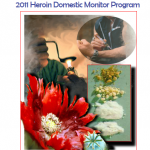
This report presents data and conclusions from the Heroin Domestic Monitor Program (HDMP) conducted by the Drug Enforcement Administration (DEA) for calendar year (CY) 2011. The HDMP provides data on the price, purity, and geographic source of heroin sold at the retail level in 27 U.S. cities. The data contained in this report are based on actual undercover heroin purchases made by the DEA and its law enforcement partners on the streets of these cities.
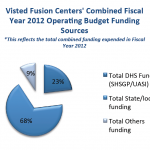
During the 112th Congress, then-Committee on Homeland Security (Committee) Chairman Peter T. King, currently the Chairman of the Subcommittee on Counterterrorism and Intelligence, directed Committee Majority staff to conduct a comprehensive study of the National Network in an effort to understand current strengths and gaps and provide recommendations for improvement. This work continued into the 113th Congress under the additional direction of current Committee Chairman Michael T. McCaul. Over the course of nineteen months (January 2012-July 2013), the Committee logged 147 meeting hours during visits to 32 fusion centers, in addition to numerous briefings and discussions with various Federal partners, representatives of the National Fusion Center Association, and follow-up conversations with fusion center directors and personnel.
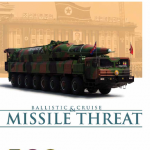
Many countries view ballistic and cruise missile systems as cost-effective weapons and symbols of national power. In addition, they present an asymmetric threat to US airpower. Many ballistic and cruise missiles are armed with weapons of mass destruction. Ballistic and cruise missiles present a significant threat to US and Allied forces overseas, and to the United States and its territories. Missiles are attractive to many nations because they can be used effectively against an adversary with a formidable air defense system, where an attack with manned aircraft would be impractical or too costly. In addition, missiles can be used as a deterrent or an instrument of coercion. Missiles also have the advantage of fewer maintenance, training, and logistic requirements than manned aircraft. Even limited use of these weapons could have devastating consequences because missiles can be armed with chemical, biological, or nuclear warheads.
A table describing Research in Motion/Blackberry requirements for disclosure of user data to law enforcement. The chart shows what legal process is required to request user data, the type of data each process can typically obtain and the legal authorities authorizing each form of request.
A collection of Network Security Agreements (NSAs) entered into with foreign communications infrastructure providers ensuring U.S. government agencies the ability to access communications data when legally requested. The agreements range in date from 1999 to 2011 and involve a rotating group of government agencies including the Federal Bureau of Investigation (FBI), Department of Homeland Security (DHS), Department of Justice (DoJ), Department of Defense (DoD) and sometimes the Department of the Treasury. According to the Washington Post, the agreements require companies to maintain what amounts to an “internal corporate cell of American citizens with government clearances” ensuring that “when U.S. government agencies seek access to the massive amounts of data flowing through their networks, the companies have systems in place to provide it securely.”
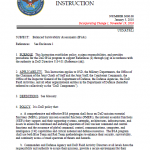
Multidisciplinary, integrated, performance-based, mission survivability assessments to identify and quantify vulnerabilities in systems, networks, architectures, infrastructures, and assets that support DoD MEFs, PMEFs, or the NEFs they support, to assess the mission impact if the vulnerabilities were successfully exploited, and to recommend measures to remediate or mitigate the vulnerabilities.

Fireworks are a common component used in Improvised Explosive Devices (IEDs). The US Government is asking consumer fireworks retailers to be aware of this phenomenon and familiarize themselves with some possible indicators of suspicious activity. This list is not inclusive, nor is it intended to limit the lawful conduct of innocent persons. The totality of behavioral indicators and other relevant circumstances should be considered.
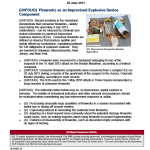
Recent incidents in the Homeland demonstrate that consumer fireworks—widely used during the upcoming 4 July 2013 celebrations—can be misused by criminals and violent extremists to construct improvised explosive devices (IEDs). Consumer fireworks are defined as devices that produce audible and visible effects by combustion, containing between 50-130 milligrams of explosive material. They are banned in Delaware, Massachusetts, New Jersey, and New York.

This study evaluates the oversight of national security and intelligence agencies by parliaments and specialised non-parliamentary oversight bodies, with a view to identifying good practices that can inform the European Parliament’s approach to strengthening the oversight of Europol, Eurojust, Frontex and, to a lesser extent, Sitcen. The study puts forward a series of detailed recommendations (including in the field of access to classified information) that are formulated on the basis of in-depth assessments of: (1) the current functions and powers of these four bodies; (2) existing arrangements for the oversight of these bodies by the European Parliament, the Joint Supervisory Bodies and national parliaments; and (3) the legal and institutional frameworks for parliamentary and specialised oversight of security and intelligence agencies in EU Member States and other major democracies.
A series of “limited release” directives from the Department of Defense and the Chairman of the Joint Chiefs of Staff including instructions, directives and manuals detailing DoD policy on a variety of topics from counterintelligence to the use of lasers in space.
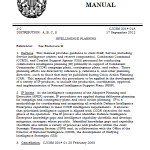
This manual provides guidance to Joint Staff, Service (including Service intelligence centers and reserve components), Combatant Command (CCMD), and Combat Support Agency (CSA) personnel for conducting collaborative intelligence planning (IP) primarily in support of Combatant Commander (CCDR) campaign plans, contingency plans, and orders.
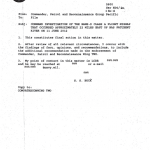
An investigation report concerning the crash of a RQ-4A Global Hawk unmanned aerial vehicle on June 11, 2012 during a training flight near the Naval Air Station Patuxent River in Maryland. The report concludes that the accident occurred due to ” mechanical malfunction of the right ruddervator actuator”. However, the pilot “failed to follow the proper emergency procedures” which “did not produce disastrous results in this particular event; however, future breaches of established procedures could produce a different outcome.”
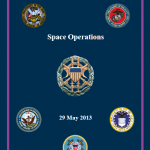
This publication provides guidance for planning, executing, and assessing joint space operations. It provides space doctrine fundamentals for all joint forces; describes the military operational principles associated with support from, through, and operating in space; explains Joint Staff, combatant command (CCMD), United States Strategic Command (USSTRATCOM), and USSTRATCOM functional and Service component relationships and responsibilities; and establishes a framework for the employment of space forces and space capabilities.